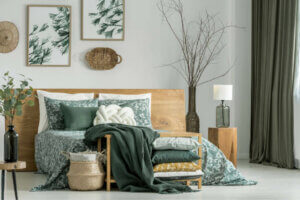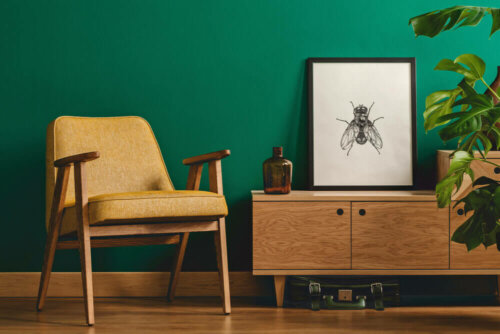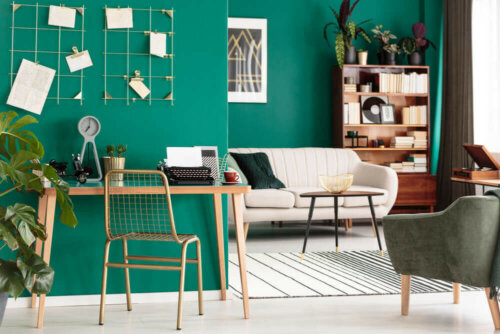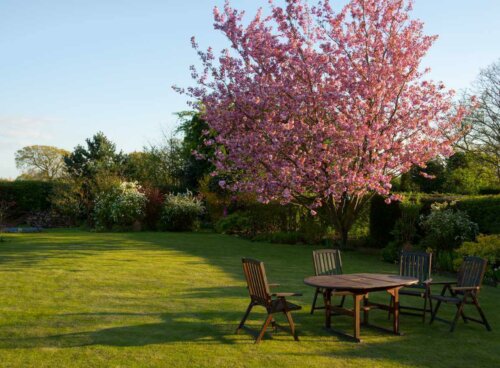The Bond between Wood and the Color Green

The combination of indoor decor elements must be perfectly planned. Often you run out of ideas and you’re just not sure how to coordinate different elements. Today, we’re going to learn about the relationship between wood and the color green.
You should avoid chromatic dissonance. When aesthetic tension is produced in the environment, it’s due to the lack of organization and harmony in the choice of colors. If there’s no link between them, then you’ll show your lack of interest in the decor.
It’s essential materials, shapes and colors are coherent. Only in this way will you achieve perfect harmony and, consequently, the well-being you desire so much. There’s nothing better than being proud of your home.
Why does wood and the color green go so well together?

The first thing to take into account is that the bond between wood and the color green is produced by the tonal difference. There isn’t an exaggerated distance between both of them, but they correspond to each other. Obviously, this will depend on the intensity of each shade.
These are two completely separate tones, one is cold and the other is warm. Not that there’s an exaggerated difference. However, there’s evidence of their different aesthetic effects.
On the other hand, these two colors evoke nature. They produce a faithful reflection of the plant world, both for the green of the foliage and the brown of the wood. By doing this, you’re introducing the countryside into your home which is great for both children’s and adult bedrooms.
Two colors that complement many styles, especially the rustic style.
Four ways to use wood and the color green together

When putting two elements together, you must be very clear about the different possibilities. The first thing is that you know what you want to do, how you can proceed, and in what ways you can use this combination at home.
- A wooden dining table next to green chairs offers a rather unique look. In fact, it isn’t usual to find this approach. Therefore, if you want to apply a contemporary decor concept, this is a good option.
- A parquet floor with a large green rug will remind you of the earth and grass. In the living room or bedroom, it’d look great, be pleasing to the eye, and provide a sense of stability.
- Also, you have the option of using this color for the cushions on a neutral gray sofa. You can place a side table next to it to counteract and generate warmth. By doing so, you get a harmonious effect.
- The curtains and the wooden window frame itself are considered two components that are directly linked. If by chance, they’re chromatically joined together in harmony, then you’ve achieved your goal.
The bond between the walls and the furniture

The walls of the home support using the color green. There are variants like mint, bottle green, pistachio, olive, clover, jade, etc. The intensity and feeling you and your guests perceive will depend on the impression you want to make.
The wrap-around effect is real. Therefore, if you don’t want to overload the environment, you can alternate with white. To avoid overpowering this cold tone, you need to contrast it with the wood, which will provide a warm and calm touch.
Therefore, you can combine brown furniture perfectly with green walls. You’ll create a natural feel, which is perfect for a rustic style bathroom.
The garden – the perfect setting for this combo

Without a doubt, the garden is where green is the most relevant. Through the grass, plants, trees, and flowers you can make the enclosure more natural. However, you need to incorporate furniture and other wooden items to create the perfect chill-out space.
In short, by combining both elements you can find different aesthetic possibilities and reach a degree of chromatic coherence.
All cited sources were thoroughly reviewed by our team to ensure their quality, reliability, currency, and validity. The bibliography of this article was considered reliable and of academic or scientific accuracy.
- Atkins, Caroline:Colorea tu hogar, Londres, Ceac, 2003.








